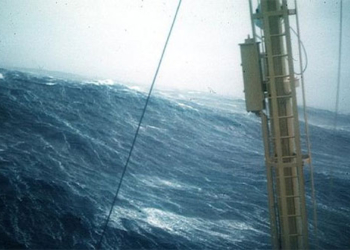With numerous strange discoveries found at the ocean’s depths, you might feel as if you are being transported to another world.
13 Surprising Discoveries Beneath the Sea
- 1. The Ship That Sank… 3 Times
- 2. Sea Toad
- 3. The Vasa Warship and Its 20-Minute Mission
- 4. The Shark That Jumps
- 5. The Mid-Atlantic Ridge
- 6. The Portuguese Man O’ War
- 7. The Marrus Orthocanna
- 8. The Antikythera Mechanism
- 9. The Goblin Shark
- 10. The Stargazer Fish
- 11. The Giant Squid
- 12. The Monkfish
- 13. The Blue-Ringed Octopus
The ocean is a vast territory that remains largely unexplored and is still waiting to be discovered. We may stumble upon old shipwrecks, treasures, or even learn something new about marine life.
Some of the strangest discoveries in the ocean below make us feel as if we are being taken to another world.
1. The Ship That Sank… 3 Times
In 1863, the H.L. Hunley submarine set sail during the American Civil War to embark on its first underwater journey.
The mission of the crew of this Confederate Navy vessel was to end the Northern blockade of the Charleston port. However, the ship sank during its initial mission, and this was not the only time it encountered such a fate.

Painting of H.L. Hunley in 1864 by artist Conrad Wise Chapman. (Source: Wikipedia).
Three attempts were made to recover the H.L. Hunley from the ocean floor. The salvage team believed the ship sank initially because it got tangled in ropes and was pulled down.
After repairs, the Hunley set sail again, but one of the crew members failed to close a critical valve, causing the entire vessel to flood and sink for the second time.
The H.L. Hunley was recovered once more, repaired, and sent out on another mission in 1874. But shortly after it sank the U.S.S. Housatonic of the Northern forces, the Hunley met a similar fate, the reasons for which remain unclear. No one knows what led to the Hunley’s disappearance for the third time in 1874.

H.L. Hunley submarine after being recovered. (Source: Naval Historical Center / Wikimedia Commons).

Researchers studying H.L. Hunley based on its remains. (Image: Naval Historical Center / Wikimedia Commons).
It wasn’t until 131 years later, in 1995, that the Hunley was found deep beneath the ocean, but what remained was rusted and shattered. The recovery efforts faced many challenges, and it wasn’t until 2000 that researchers successfully recovered it and began their investigations.
However, due to the extent of damage to the hull, experts feared that some personal belongings and equipment of the crew remained on the ocean floor. They explored the ship meticulously in hopes of finding some invaluable artifacts inside.
2. Sea Toad
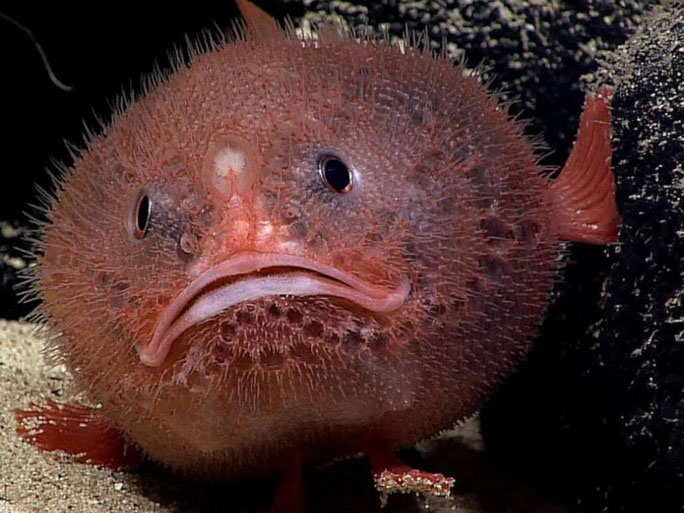
Image: NOAA Ocean Exploration & Research
There are all sorts of fascinating marine creatures swimming at the ocean’s depths, and this red creature is one of them. It is a species of sea toad and can be found at depths of approximately 2,463 meters in the Atlantic, Pacific, and Indian Oceans.
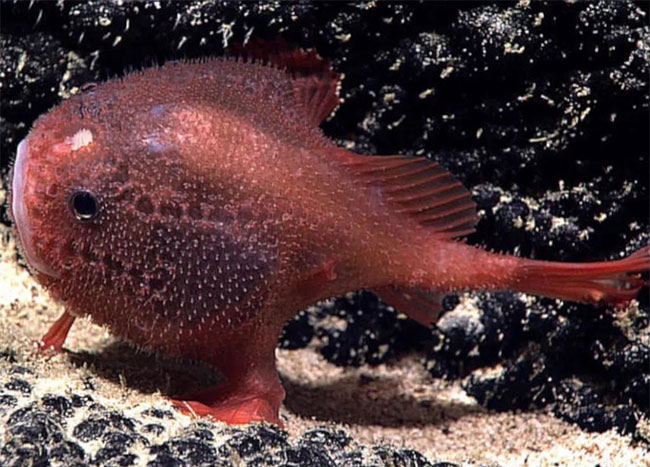
Image: NOAA Ocean Exploration & Research
Covered in small spines, the sea toad has two interesting features that make it unique.
The sea toad will wave its bioluminescent dorsal fin to lure other fish into its mouth. Its prey is so mesmerized by the light that it doesn’t realize it is heading toward its doom.
Another feature is that it can rest one pectoral fin on a rock and the other on the sand, appearing almost as if it is standing.
3. The Vasa Warship and Its 20-Minute Mission
On August 10, 1628, the Swedish warship Vasa set sail. This approximately 69-meter-long ship was equipped with 64 heavy cannons, making it quite a formidable warship. However, its maiden voyage did not last long, primarily due to its oversized dimensions.
Less than 20 minutes after leaving port, a strong gust of wind tipped the Vasa to one side. Unfortunately, the heavy cannons combined with the ship’s large size and the overall weight of the 250 crew members onboard caused the ship to sink to a depth of about 32 meters.


The Vasa warship displayed in a museum in Stockholm, Sweden. (Image: Wikimedia Commons)
Many centuries later, archaeologists discovered parts of the ship’s hull as well as 40,000 artifacts from the wreckage. Explorers spent three decades cataloging the various artifacts.
In 1990, the Vasa Museum in Stockholm, Sweden, showcased the historic ship in all its magnificent glory for people to admire. Despite Vasa’s brief journey, Sweden still considers it an important achievement.
4. The Shark That Jumps
The basking shark is a plankton-eating species with a conical snout and large gill slits. They typically measure around 7-8 meters in length but can sometimes grow up to 11 meters, with males generally larger than females.
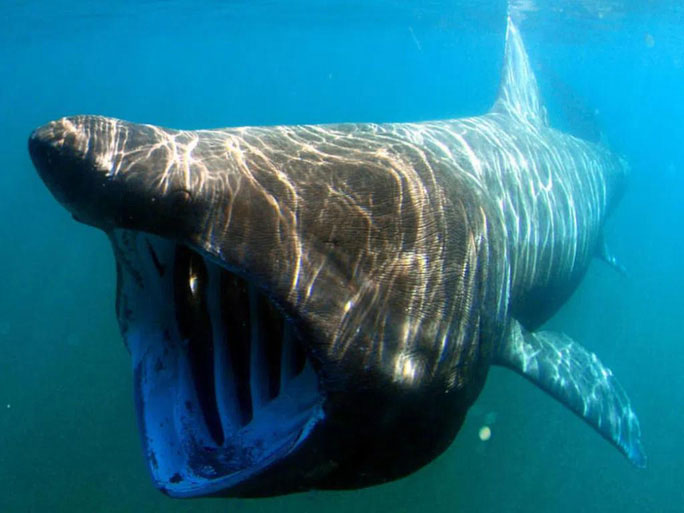
Basking Shark. (Image: Wikipedia).
They are considered the second-largest shark species on the planet. However, that is not the only reason divers want to avoid encountering them at all costs.
The teeth of the basking shark are very small, measuring only about 4 mm in length, but they have a staggering 1,200 teeth! What makes this creature even more frightening is that they can completely leap out of the water and snap at prey or drag them down to the ocean floor.
Generally, this species prefers to swim alone. However, researchers have discovered that they can also swim in groups of up to 100 of their kind!
5. The Mid-Atlantic Ridge

Location of the Mid-Atlantic Ridge. (Image: Wikimedia Commons)
The Mid-Atlantic Ridge (MAR) is an underwater mountain range that runs along the North-South axis of the Atlantic Ocean floor and is considered the longest mountain range on the planet.
Researchers have found that it was formed by the divergent movement between the tectonic plates of North America, South America, Africa, and Eurasia from ancient times.
6. The Portuguese Man O’ War

The Portuguese Man O’ War resembles a warship. (Image: Wikipedia)
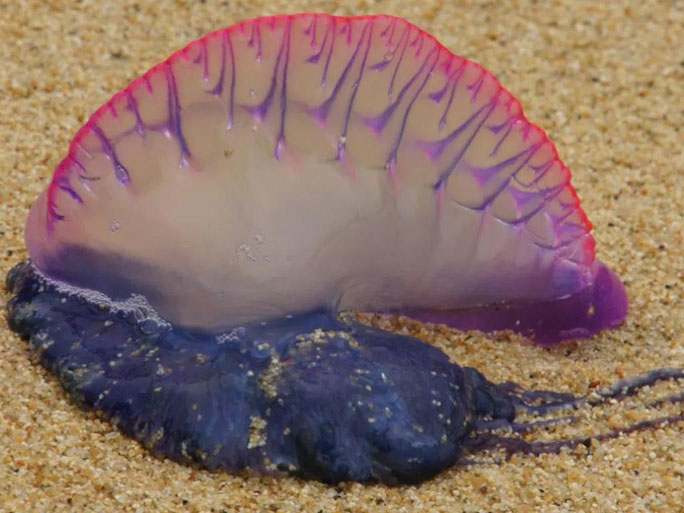
The dead Portuguese Man O’ War can still sting humans causing swelling and itching. (Image: Wikipedia)
The Portuguese Man O’ War is named as such because it resembles an 18th-century warship with its sails unfurled. This creature is commonly found in the Atlantic and Indian Oceans.
The toxin from this jellyfish causes excruciating pain to its victims. In Australia alone, around 10,000 cases of Portuguese Man O’ War stings are reported every summer.
Even when dead, the Portuguese Man O’ War can still inflict pain on unsuspecting beachgoers who accidentally step on their drifting remains. Those unfortunate victims may suffer from swelling that lasts up to 3 days. Fortunately, this swelling rarely proves fatal.
7. The Marrus Orthocanna
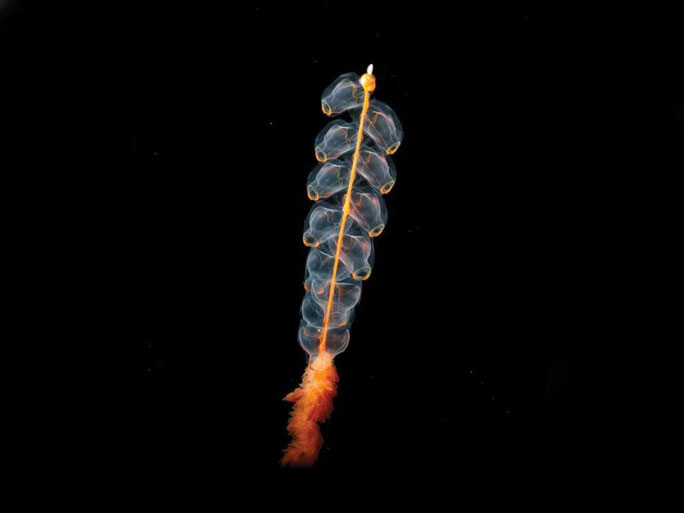
Marrus Orthocanna Jellyfish. (Image: Wikipedia)
Marrus orthocanna is a species of siphonophore commonly found in cold waters such as the North Atlantic, Northwest Pacific, and Arctic Oceans.
Marrus orthocanna behaves similarly to bees, working collectively for the benefit of their shared “territory.”
Their primary purpose is to search for food to survive. Whenever they detect crustaceans like mysid shrimp or mollusks, they extend their tentacles to capture their prey.
8. The Antikythera Mechanism
In 1900, Captain Dimitrios Kontos and a team of divers discovered the wreckage of an ancient ship off the coast of Antikythera Island in Greece. That same year, they assisted the Hellenic Navy in recovering artifacts from the sunken ship.

The Antikythera Mechanism excavated. (Photo: Wikipedia Commons)
Among the recovered items were coins, jewelry, glassware, ceramics, and statues made of bronze and marble. However, the most fascinating discovery was the Antikythera Mechanism.
The Antikythera Mechanism is believed to be the first analog computer invented by humans and is an invaluable artifact. In fact, historians believe the ship carrying this device sank while traveling from the island of Rhodes in Greece to Rome.
The items retrieved from the wreck are currently housed in the National Archaeological Museum in Athens, Greece.
In addition to being the first analog computer, the device also served as an astronomical tool used for calculations and could display data about astronomical phenomena.
Made of bronze and wood and operated manually, it allowed ancient Greeks to predict eclipses, chart various lunar cycles, and track the seasons of the year. Unfortunately, the museum only possesses about one-third of the pieces that make up this mechanism.
9. Goblin Shark
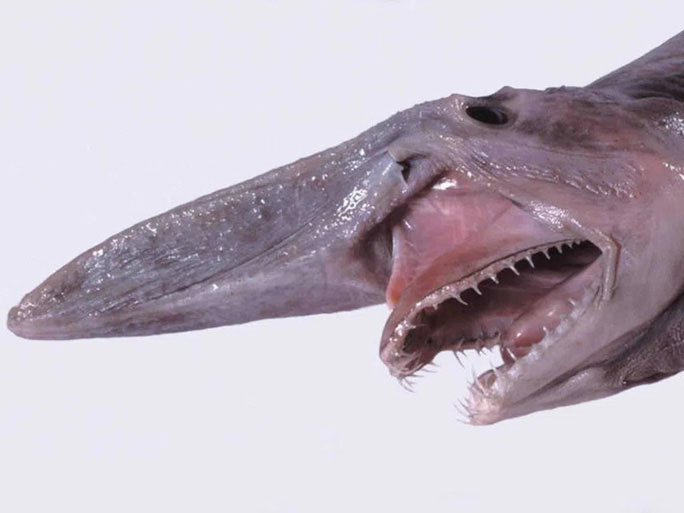
The Goblin Shark with its long, pointed snout. (Photo: Wikimedia Commons).
The Goblin Shark is often dubbed a “living fossil” as it dates back 125 million years. Since this species was first discovered in 1897, humans have only seen about 50 of them.
The snout of the Goblin Shark contains sensory organs that function to detect electrical signals. This feature enables the shark to sense the electric fields of its prey, allowing it to quickly locate and pursue its meal, while also helping it gauge the size of its target. Thus, the shark can determine whether it needs to fight or can simply open its mouth and swallow the prey.
10. Stargazer
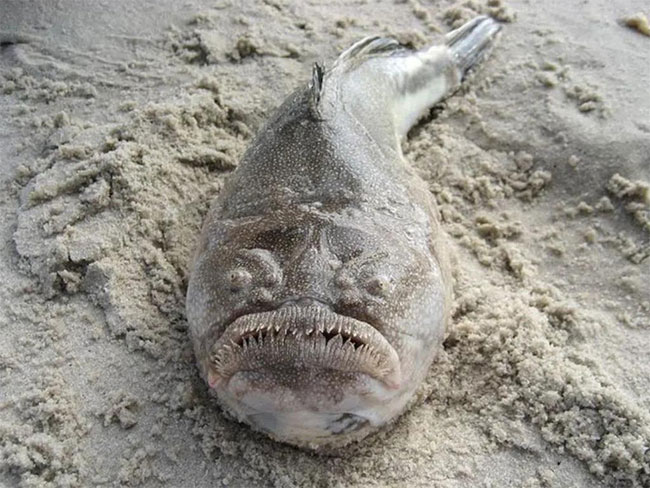
Stargazer. (Source: Wikipedia Commons).
The Stargazer is considered one of the “most bizarre” fish for several reasons. It emits a debilitating electric shock to its prey using its eye muscles. But that’s not the only reason to steer clear of the Stargazer.
Stargazers are highly venomous. They possess two large spines located behind their eyelids and fins that can sting their prey.
Fortunately, their venom is not strong enough to kill a human, but it can cause temporary paralysis. Stargazers use their camouflage and venom to incapacitate other fish for feeding.
11. Giant Squid

Giant Squid. (Photo: Wikimedia Commons)
This species of squid lives at depths of about 1,829 meters below sea level. No fisherman has ever captured one alive, and the reason may lie in their unique natural defense system.
These giant squids are very difficult to catch. Whenever they sense danger, they release a cloud of bioluminescent ink that blinds predators long enough for them to escape. In some cases, they use this temporary confusion to their advantage, attacking with two tentacles that are twice the length of their body.
Ironically, giant squids do not live long in this world, as they have a lifespan of less than three years.
12. Monkfish
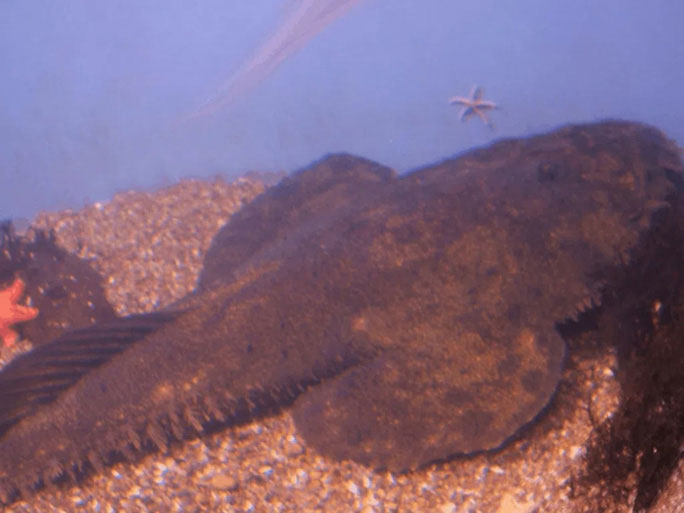
Monkfish on the ocean floor. (Photo: Wikimedia Commons).
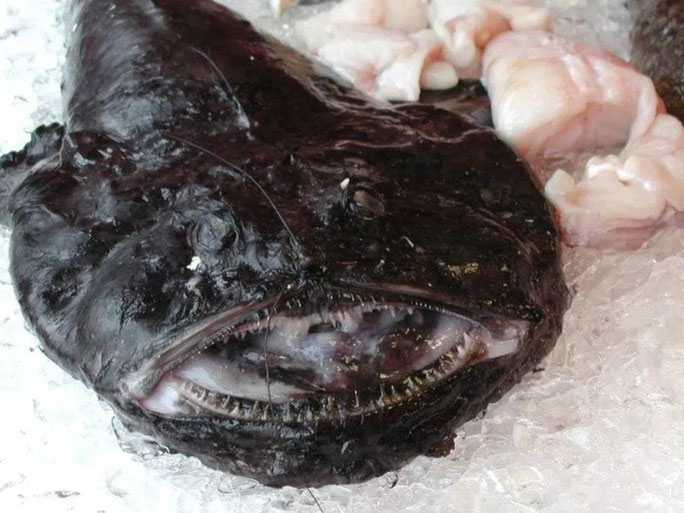
Head with many spines and a concave shape. (Photo: Wikimedia Commons)
The most peculiar feature of this fish is its concave head, which looks as if someone has stepped on it. They are typically found at depths of about 914 meters in the ocean, preferring to spend most of their time buried in mud or sand on the ocean floor to hunt smaller creatures.
This may be why they are often confused with a species of shark known as angel shark, even though they are not the same species at all.
There are seven different species of monkfish spread across the Arctic, Atlantic, Indian, and Pacific Oceans. To date, the largest one found was about 150 cm long.
13. Blue-Ringed Octopus
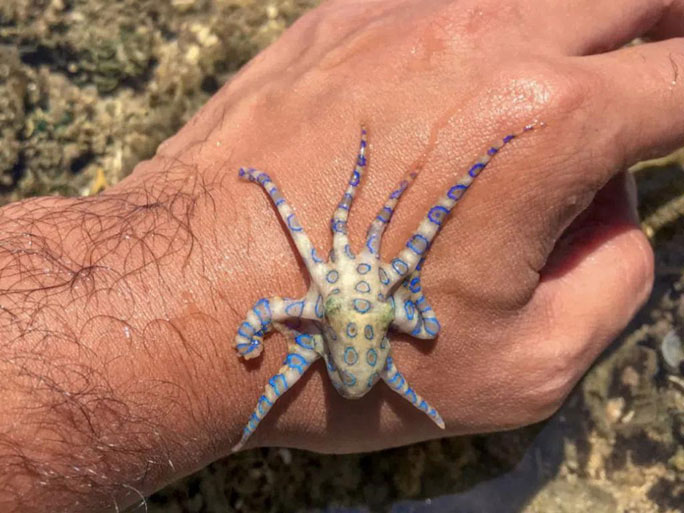
This small octopus has venom comparable to that of pufferfish. (Photo: Shutterstock)
The blue-ringed octopus is believed to be the only octopus species with a toxin potent enough to kill an adult human.
In 1929, British zoologist Guy Coburn Robson discovered that these creatures turned bright yellow and their spots flashed bright blue for one-third of a second after detecting a threat.
In some cases, the rings will flash a bluish-green color to warn nearby creatures to back off.
The blue-ringed octopus produces tetrodotoxin, a neurotoxin found in pufferfish. Just one milligram can be lethal. However, they rarely bite humans unless they feel threatened.








































